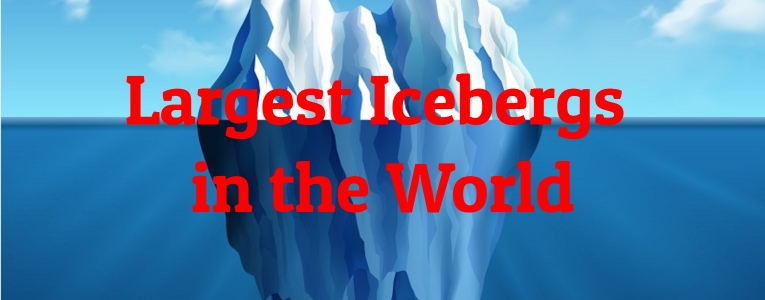Icebergs break off of ice shelves in a process known as “calving,” and usually then float out to sea until they’re caught by an oceanic current. While most of us will probably never get a chance to see these wonders of nature in person, photographs are almost as good!
By this point you’re probably wondering just how large these frozen giants can get. Well, you’re in luck: Because today we’ll be looking at 10 of the largest icebergs ever documented in terms of area, as well as learning what became of them.
-
B-17B
Maximum Length: 19 kilometers
Year Discovered: 1999
Status: Disintegrated

Source: wikimedia.org
Clocking in at more than twice the size of Manhattan, Iceberg B-17B broke off from the Ross Ice Shelf off the coast of Western Australia. It began its life at an impressive size, but quickly started shedding ice chunks as it floated towards the north. B-17B caught the attention of scientists by floating unusually far north while remaining intact, before it began its inevitable breakdown.
Did You Know?
One of the largest chunks of ice that broke off of Iceberg B-17B was described as resembling a cartoon whale in satellite images.
-
B-44
Maximum Length: 28 kilometers
Year Discovered: 2017
Status: Disintegrated
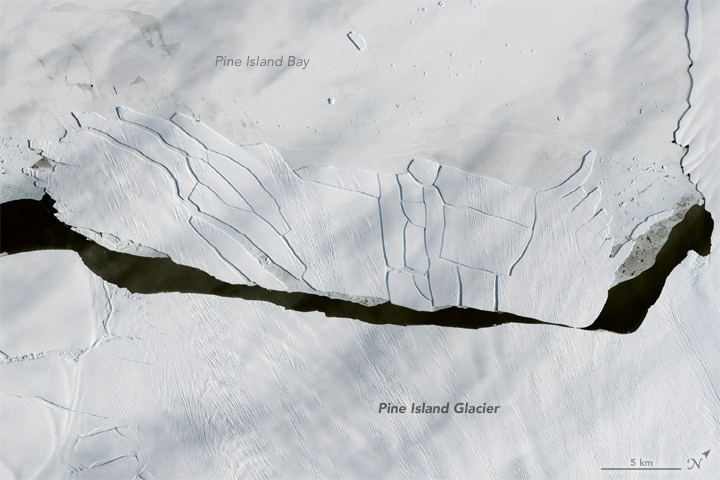
Source: wikimedia.org
Spawned from Pine Island Glacier in the Antarctic region, Iceberg B-44 was as short-lived as it was majestic. The Pine Island Glacier is one of the primary outlets that allows ice from the West Antarctic Ice Sheet to flow into the ocean. While the Pine Island Glacier has calved plenty of major icebergs that have held up against the ocean currents, B-44 broke into over 20 smaller bergs in a matter of weeks.
Did You Know?
Pine Island Glacier and the neighboring Thwaites Glacier are estimated to contribute one millimeter per decade to global sea rise.
-
Petermann Glacier Ice Island
Maximum Length: 70 km
Year Discovered: 2006
Status: Disintegrated
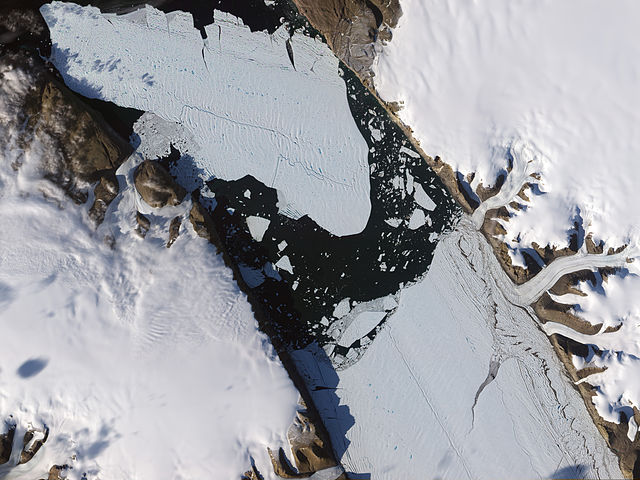
Source: wikimedia.org
The Petermann Glacier is located in Northwest Greenland just east of the Nares Strait, and connects the Greenland ice sheet with the Arctic Ocean. This massive ice island was detected by the Canadian Ice Service mere hours after it calved off the glacier, affording a relatively rare opportunity to document it at its largest.
Did You Know?
The Petermann Glacier Ice Island was said to be the largest iceberg to calve in the Arctic since the year 1962.
-
B-31
Maximum Length: 39 kilometers
Year Discovered: 2013
Status: Unknown

Source: wikimedia.org
This giant iceberg separated from Pine Island Glacier and exhibited unusually little change in surface area as it floated across Pine Island Bay. At around 500 meters thick, B-31 also caused some trouble by interfering with oceanic shipping routes. Scientists tracked the iceberg while they could before it floated into Antarctic waters and the winter darkness, where it could no longer be documented.
Did You Know?
Pine Island Glacier is diligently monitored not only because of its previously-mentioned contributions to global sea rise, but because of the danger that its calving icebergs pose to ships.
-
B-9
Maximum Length: 154 kilometers
Year Discovered: 1987
Status: Disintegrated
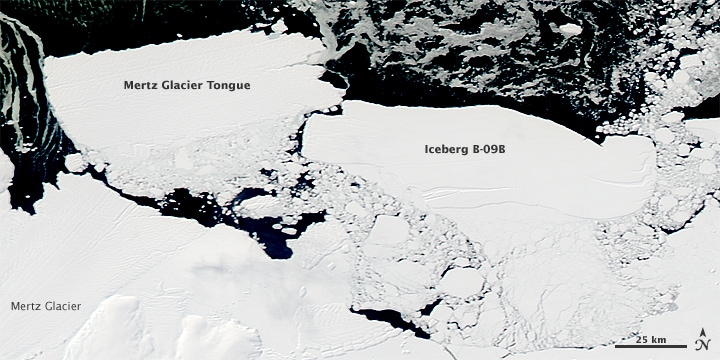
Source: wikimedia.org
The destructive B-9 iceberg made a name for itself from the moment it calved by carrying away the Little America Antarctic exploration bases when it broke off of the Ross Ice Shelf. Iceberg B-19 continued its journey for 22 entire months, moving northwest before it was caught up in a southbound subsurface current.
Did You Know?
The subcurrent that directed B-9 southward wound up pushing it into a collision with other ice structures, which it survived all the way up until the year 2000, when it began to break apart into smaller icebergs.
-
C-19
Maximum Length: 200 kilometers
Year Discovered: 2002
Status: Disintegrating
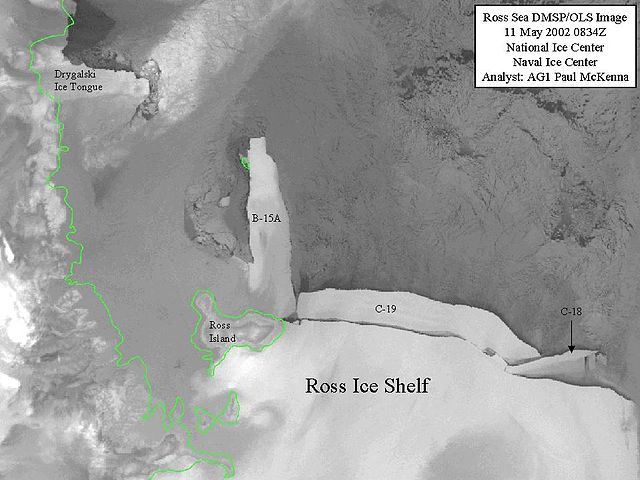
Source: wikimedia.org
Iceberg C-19 traveled northwest from the Ross Ice Shelf where it broke off, running itself aground more than once. C-19 was so huge at the time of documentation that it is said to have changed the normal ocean circulation around it. While truly impressive in size, C-19’s narrow shape was prone to breakage, eventually leading to its demise.
Did You Know?
After the calving of the C-19 iceberg, scientists estimated the previously-growing Ross Ice Shelf to have returned to the size it was during the early 1900’s.
-
A-68
Maximum Length: 175 kilometers
Year Discovered: 2017
Status: Largely Intact
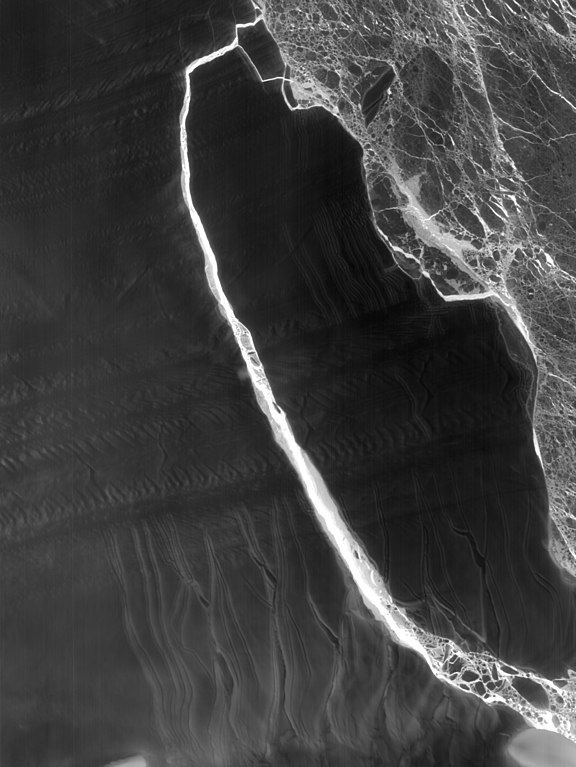
Source: wikimedia.org
Iceberg A-68 calved from the Antarctic Larsen C Ice Shelf, taking away a chunk of mass so big that it reduced the shelf’s overall size by 12 percent! Shallow waters and other chunks of sea ice limited its mobility, but A-68 finally broke off and began its anticipated years-long journey into deeper waters in 2017.
Did You Know?
The original calving of A-68 is somewhat cloaked in mystery, since thick cloud cover and poor satellite coverage required scientists to estimate the date of when it broke off.
-
B-15A
Maximum Length: 473 kilometers
Year Discovered: 2002
Status: Disintegrated

Source: wikimedia.org
Having calved off of the even more impressive Iceberg B-15, B-15A was so huge that it blocked off the traditional sea routes to McMurdo Station, the National Science Foundation’s Antarctic research station. After spending five years with claim to the title of the largest free-floating object in the world, B-15A finally broke apart near Cape Adare in Antarctica.
Did You Know?
Scientists believe that the iceberg calving that led to the creation of B-15A was part of a natural, long-term cycle, which occurs every 50-100 years.
-
A-38
Maximum Length: 144 kilometers
Year Discovered: 1998
Status: Disintegrated
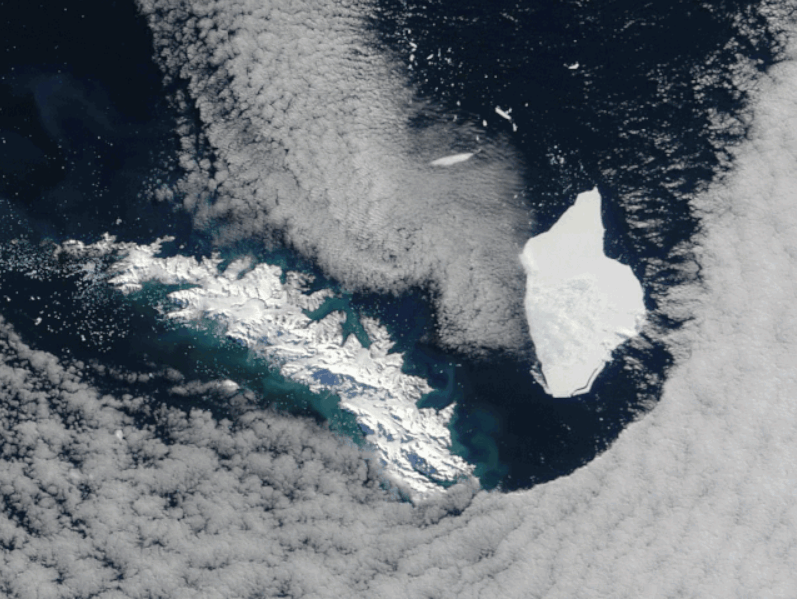
Source: wikimedia.org
The A-38 iceberg broke off of the Ronne Ice Shelf in Antarctica, and was the largest iceberg observed and documented in a decade at the time of its calving. In just a few short months, the original iceberg had already begun to shed chunks of ice that soon drifted apart from one another.
Did You Know?
The Filchner-Ronne Ice Shelf that spawned iceberg A-38 is the second largest ice shelf in Antarctica.
-
B-15
Maximum Length: 295 kilometers
Year Discovered: v
Status: Disintegrated
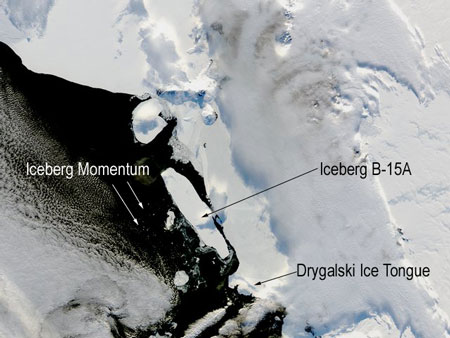
Source: wikimedia.org
Iceberg B-15 was the largest recorded iceberg in the world by area. Breaking off from the Ross Ice Shelf to begin its seaward journey, B-15 was larger than the entire island of Jamaica. While it was astounding for the duration of its life, B-15 sported a large crack down its center that made it prone to breakage, and floated into waters that were too warm for it to sustain.
Did You Know?
The U.S. National Ice Center requires an iceberg or ice fragment to measure at least 19 kilometers in length in order to track it. The last fragment of B-15 to meet this criteria was B-15T.
